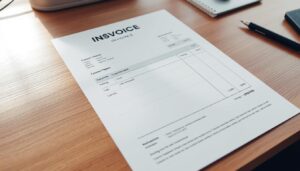Are you struggling to provide accurate quotes for your repair projects, potentially losing profits or clients due to miscalculations?
Accurate material estimation is crucial for the success of your contracting or repair business. It directly impacts your profitability and client satisfaction.
This comprehensive guide will walk you through the essential steps of the estimation process, from initial client consultations to final pricing calculations, ensuring you can handle projects of varying complexity.
Key Takeaways
- Understand the importance of accurate material estimation for your business’s profitability and reputation.
- Learn the steps involved in the estimation process to improve your quoting accuracy.
- Discover practical techniques for measuring, calculating, and pricing materials for various repair projects.
- Master the estimation process to maintain accuracy in your material calculations and improve client satisfaction.
- Enhance your business’s competitiveness and profitability by avoiding costly overruns or underquoting.
The Importance of Accurate Material Estimation
Accurate material estimation is crucial for the success of your repair business. When you provide accurate estimates, you build trust with your clients and ensure the financial stability of your business.
Building Trust with Clients Through Precise Estimates
Providing precise estimates helps to establish your credibility and reliability with clients. When clients feel confident in your ability to deliver a project within the estimated costs, they are more likely to proceed with your services. This trust is fundamental in securing contracts and maintaining a positive reputation in the competitive remodeling industry.
Financial Implications of Inaccurate Estimates
Inaccurate estimates can have severe financial implications for your business. Underestimating material costs can erode your profit margins, while overestimating can result in lost business opportunities. The financial instability caused by inconsistent estimates can threaten the long-term viability of your business. Key issues include:
- Underestimating material costs impacting profit margins.
- Overestimating costs leading to lost business opportunities.
- Inaccurate estimates creating cash flow challenges.
- The cumulative effect of inaccurate estimates threatening business viability.
By focusing on accurate estimates, you can protect your business from financial instability and maintain consistent profit margins across all your repair work.
Understanding the Scope of Your Repair Project
The success of your repair project hinges on comprehending its scope and the factors that influence it. Accurately understanding the project’s requirements is crucial for delivering it on time and within budget.
Conducting Thorough Initial Consultations
Initial consultations with your client are vital for understanding the project’s scope. During these meetings, you should gather detailed information about the client’s needs, expectations, and any specific requirements they may have. This stage is crucial for setting the foundation for the entire project.
Performing Detailed Site Assessments
A thorough site assessment is essential for understanding the conditions that may affect your work. The main purpose of a site visit is to better understand the site conditions and how they are likely to influence the project costs. For instance, a site with poor drainage or difficult subsurface soil conditions could add complexity and cost to your project.
Some key aspects to consider during your site assessment include:
- Identifying existing conditions that might affect material requirements or installation methods.
- Taking detailed measurements and photographs to ensure accurate material calculations.
- Assessing site accessibility and working conditions that might impact material delivery or installation efficiency.
By understanding the scope of your repair project and conducting thorough site assessments, you can create more accurate estimates and ensure the success of your project.
| Assessment Criteria | Potential Impact on Project |
|---|---|
| Poor drainage | Increased complexity and cost due to additional drainage solutions |
| Difficult subsurface soil conditions | Higher costs for specialized equipment or labour |
| Limited site accessibility | Increased costs due to difficulties in delivering materials and equipment |
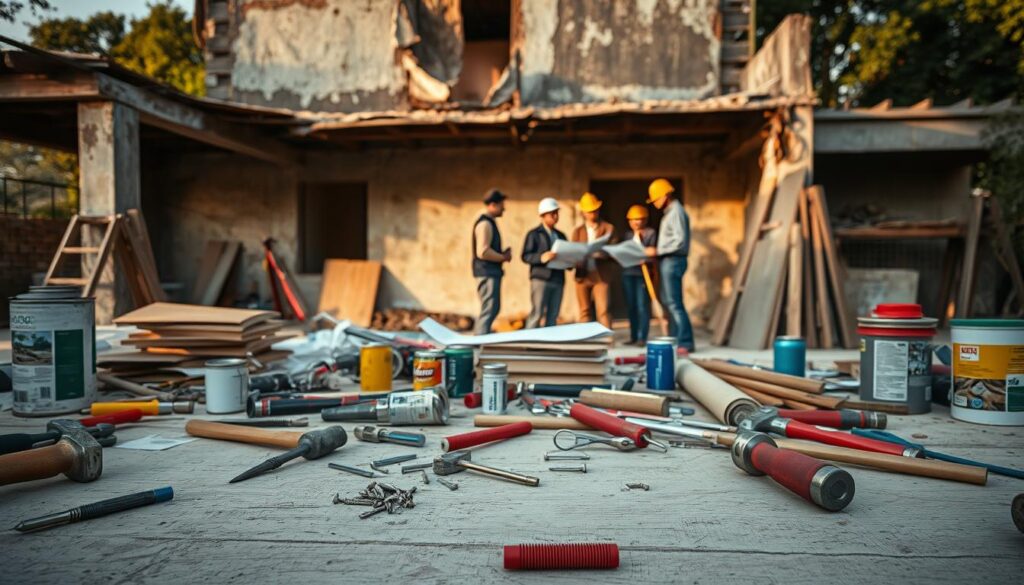
Creating a Comprehensive Project Plan
Creating a comprehensive project plan is a critical step in the material estimation process, as it helps you identify all the required materials and specifications. A well-structured plan ensures that you account for all aspects of the repair project, reducing the risk of misunderstandings or omissions.
Breaking Down the Project into Work Packages
To create a comprehensive project plan, you need to break down the project into work packages. This involves subdividing the project into smaller, manageable components that can be assigned to specialty contractors. By doing so, you ensure that all work is accounted for and that no work is assigned twice. For instance, a general contractor may divide a repair project into work packages such as concrete, masonry, metals, finishes, and plumbing, according to the Construction Specification Institute (CSI)’s MasterFormat.
| Work Package | Description | CSI Division |
|---|---|---|
| Concrete | All concrete-related work, including pouring and finishing | 03 |
| Masonry | Masonry work, including brick and block laying | 04 |
| Metals | Metal fabrication and installation | 05 |
Documenting Project Requirements and Specifications
Thorough documentation of project requirements and specifications is essential for accurate material estimation. You should record all material specifications in detail, including dimensions, grades, finishes, brands, and performance requirements. Additionally, create detailed drawings or sketches where necessary to visualise complex repair elements. It’s also crucial to document any client-supplied materials or existing materials that will be reused to avoid duplicating these items in your material estimates.
By maintaining a comprehensive record of all project communications regarding materials and specifications, you can protect yourself from scope creep and provide justification for your material estimates if questions arise.
Mastering the Material Takeoff Process
Accurate material takeoff is the foundation upon which successful repair projects are built. To achieve this accuracy, you need to understand the different methods available for material takeoff and how to account for potential waste.
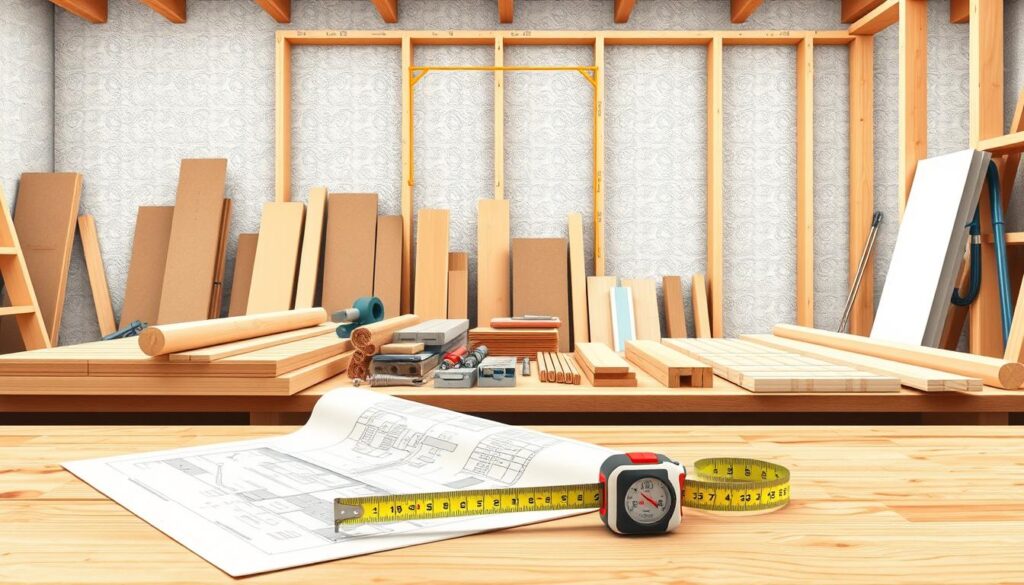
Manual vs. Digital Takeoff Methods
The material takeoff process can be performed manually or digitally. While manual takeoffs rely on human calculation and measurement, digital takeoffs utilise specialised software to streamline the process. Digital takeoff methods, such as those using construction material takeoff software in the UK, offer increased accuracy and efficiency.
Accounting for Material Waste and Extras
Every material estimation process must account for inevitable waste that occurs during the repair process. Different materials have different waste factors; for example, tile typically requires 10-15% extra for cuts and breakage, while drywall might need only 5-10% additional material.
- Factor in the complexity of the installation when calculating waste allowances.
- Include a buffer for replacement materials that might be needed for future repairs or touch-ups.
- Consider supplier packaging quantities when estimating materials.
By understanding the material takeoff process and accounting for potential waste, you can create more accurate estimates and reduce the risk of costly surprises during the repair project.
Estimating Repair Job Materials Accurately: Step-by-Step Approach
To achieve precision in repair job estimates, it’s essential to follow a structured methodology that covers all aspects of material estimation. This approach not only enhances the accuracy of your estimates but also streamlines the repair process, reducing potential delays and cost overruns.
Identifying All Required Materials
Identifying all the materials needed for a repair job is the first critical step. This involves creating a comprehensive list of materials based on the project’s specifications and requirements. You should consider all elements, from primary building materials to specialized tools and equipment.
- Review project plans and specifications to determine the materials needed.
- Consider consulting with specialists for complex or unfamiliar repair types.
Calculating Precise Quantities
Once you have identified the required materials, the next step is to calculate their precise quantities. This involves taking accurate measurements of the repair area and applying them to your material list. It’s crucial to account for potential waste and extras to avoid underestimating.
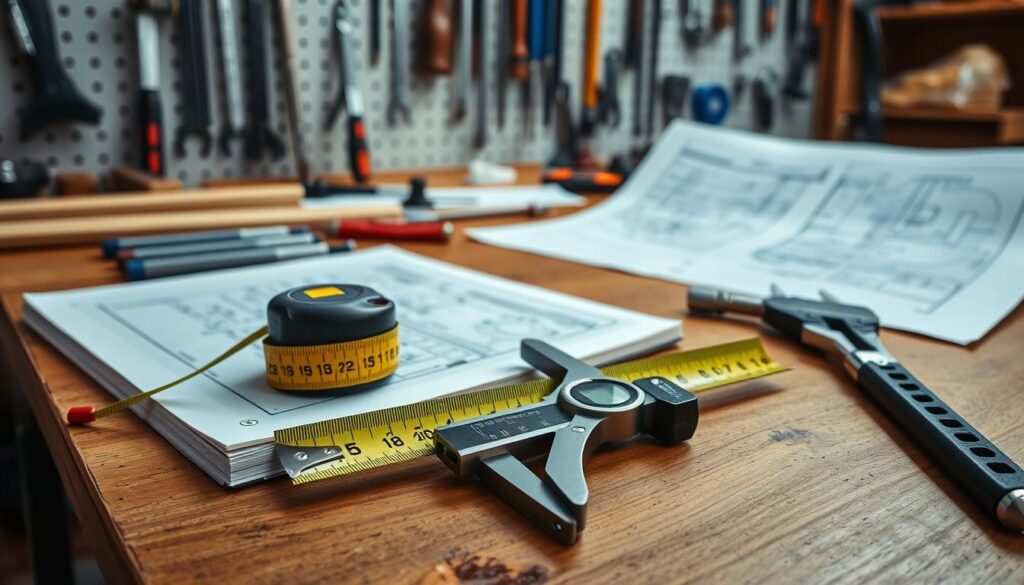
| Material | Quantity | Unit Price | Total Cost |
|---|---|---|---|
| Cement | 100 kg | £5/kg | £500 |
| Bricks | 500 units | £0.5/unit | £250 |
Verifying Measurements and Specifications
Verifying your measurements and ensuring that the materials specifications meet the project’s requirements is vital. This step involves double-checking all critical measurements and cross-referencing material specifications with manufacturer recommendations and industry standards.
- Double-check all measurements to avoid errors.
- Verify that materials meet relevant building codes and industry standards.
By following this step-by-step approach, you can significantly improve the accuracy of your material estimates, enhancing the overall efficiency and profitability of your repair projects.
Calculating Labour Costs for Repair Projects
When estimating repair projects, accurately calculating labour costs is crucial for staying within budget. Labour costs can significantly impact the overall expense of a project, and incorrect estimation can lead to financial losses.
Determining Required Labour Hours
To calculate labour costs, you first need to determine the total labour hours required for the project. This involves breaking down the project into tasks and estimating the time needed for each task. Consider the complexity of the work, the skill level of your workforce, and any potential challenges that may arise during the project. For more insights on the differences between labour and material costs, you can refer to this article on labour vs material cost in construction.
Factoring in Loaded Labour Rates
Once you have determined the total labour hours, you need to factor in the loaded labour rate. The loaded labour rate includes not just the basic hourly wage but also additional employment costs such as taxes, insurance, retirement contributions, and union dues. Using loaded labour rates ensures that you account for the true cost of labour for your business. It’s essential to consider different skill levels and their corresponding labour rates, as well as efficiency factors based on crew experience with specific materials.
To improve the accuracy of your labour cost estimates, track actual labour hours against estimated hours on completed projects. This will help refine your labour rate calculations and enhance the precision of future estimates.
Including Indirect Costs in Your Estimate
To create a comprehensive estimate, you must consider various indirect expenses that impact your bottom line. These costs are not directly related to the materials or labour required for the project but are essential to the overall operation of your business.
Equipment and Tool Expenses
When estimating repair job costs, it’s essential to factor in equipment and tool expenses. These costs can include depreciation, maintenance, and repair of equipment, as well as tool replacement and upgrade expenses. By accounting for these costs, you can ensure that your estimate accurately reflects the total expense of completing the project.
Insurance and Bonding Requirements
Insurance and bonding are critical components of any construction or repair project. You must include the costs of liability insurance, workers’ compensation insurance, and any other relevant insurance policies in your estimate. Additionally, if bonding is required, you’ll need to factor in the associated costs.
Overhead and Administrative Costs
Overhead and administrative costs are a crucial aspect of your estimate. These expenses include rent, utilities, administrative salaries, software subscriptions, and other general and administrative (G&A) expenses. To ensure that your business remains profitable, you must spread these costs across your projects annually. Consider the following overhead expenses:
- Administrative costs associated with material procurement and management
- Office space and utility expenses
- Administrative staff salaries and benefits
- Business software and subscription services
By including these indirect costs in your estimate, you can ensure that your business remains financially healthy and competitive.
Essential Tools and Software for Accurate Estimation
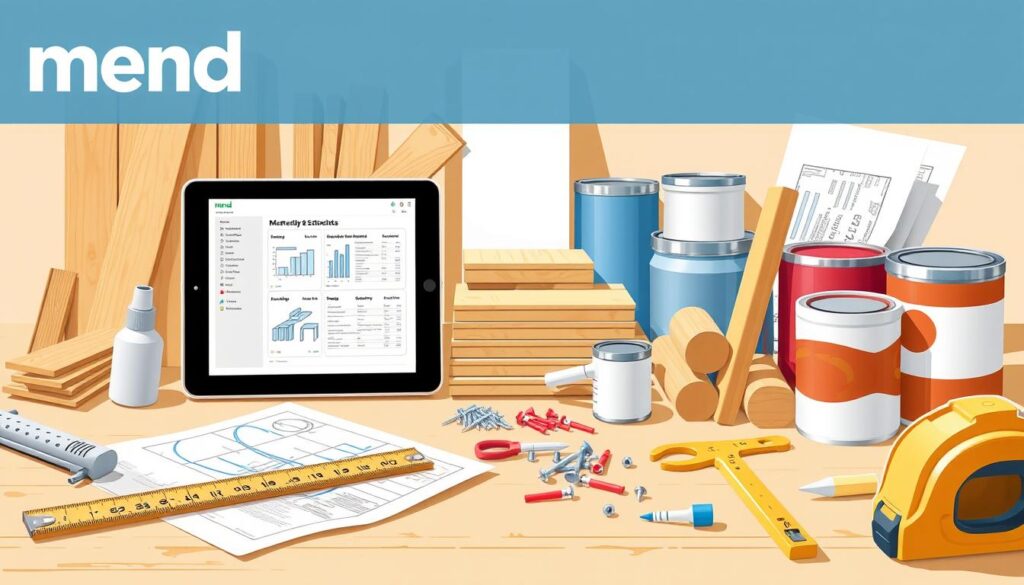
With the advancement of technology, contractors now have access to a wide range of tools and software that enhance estimation accuracy. Modern contractors can leverage specialized estimating software and real-time pricing databases to provide precise cost assessments.
Digital Estimation Solutions
Digital estimation solutions have transformed the way contractors estimate repair job materials. By utilizing estimating software, you can streamline your estimation process, reduce errors, and improve accuracy. These solutions often integrate with other construction management tools, enhancing overall project efficiency.
Real-Time Pricing Databases
Real-time pricing databases connect your estimating software to current material costs from suppliers, ensuring your estimates reflect actual market prices. Key benefits include:
- Alerts to price fluctuations for key materials, allowing you to adjust estimates accordingly.
- Comparison of pricing across multiple suppliers to identify the most cost-effective sources.
- Integration with inventory management systems to prevent unnecessary purchases.
Consider using subscription-based pricing services that specialize in your specific repair niche for more detailed and relevant pricing information.
Avoiding Common Estimation Pitfalls
The accuracy of your material estimates can make or break your repair project’s financials, so it’s critical to steer clear of common estimation pitfalls. By being aware of these potential issues, you can take proactive steps to ensure the success of your project.
Underestimating Material Costs
Underestimating material costs is a common pitfall that can lead to significant financial strain on your project. To avoid this, it’s essential to thoroughly research material prices and account for potential price fluctuations. You should also consider the quality of materials required for the project and factor in any necessary upgrades or replacements.
Overlooking Site-Specific Challenges
Overlooking site-specific challenges can also lead to estimation errors. It’s crucial to conduct a detailed site assessment to identify potential issues such as environmental hazards, structural damage, or accessibility constraints. By understanding these challenges, you can develop a more accurate estimate and plan accordingly.
| Site-Specific Challenge | Potential Impact | Mitigation Strategy |
|---|---|---|
| Environmental Hazards | Increased costs due to safety measures | Conduct thorough risk assessment |
| Structural Damage | Unforeseen repair costs | Perform detailed site inspection |
| Accessibility Constraints | Logistical challenges and delays | Develop contingency plan for access |
Neglecting Contingency Planning
Neglecting contingency planning is another common pitfall that can leave your project vulnerable to unexpected expenses. To avoid this, always include a contingency amount in your estimate, typically ranging from 5-10% of the total project cost. This buffer will help you absorb any unforeseen costs and maintain profitability.
Conclusion: Elevating Your Repair Business Through Precise Estimation
Accurate estimation is the backbone of a successful repair business, influencing both profitability and reputation. By mastering the art of estimating repair job materials accurately, you can significantly enhance your business prospects. Implementing a systematic approach to estimation protects your profit margins while keeping you competitive in the marketplace.
Continuously refining your estimation process by analyzing completed projects and tracking actual material usage against estimates is crucial. This not only improves your profit but also contributes to the overall success of your business. By doing so, you’ll build a sustainable business model that balances competitive pricing with healthy profit margins, positioning your repair business for long-term success.

